M.J. Johnson's Blog, page 7
November 27, 2014
A Package Holiday to Earthsea!
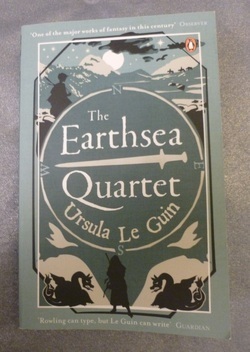 I first read The Earthsea Trilogy when I was in my early twenties and absolutely loved it. The books are meant to be read in the order they were written: A Wizard of Earthsea (1968), The Tombs of Atuan(1971), and The Farthest Shore (1972). My wife (who it is more than likely discovered them in the first place!) and I have often recommended them to friends, we certainly sent our son Tom off in their direction once he was old enough to enjoy them. It was in fact he who first realised that Le Guin had written a fourth book, Tehanu (1990), and I have been meaning to catch up with it for some years. My son recently prompted me to get on and re-read the books by giving me a lovely surprise gift of The Earthsea Quartet a few weeks back. I don’t think he was actually aware, I certainly wasn’t, that Le Guin has, since the publication of Tehanu, added another two volumes under the Earthsea banner, Tales from Earthsea (2001), and finally (the last, perhaps?) The Other Wind (2001). Although I don’t think they’re available in one book as The Earthsea Sextet. Tee hee hee! (Don’t quite know why I think that’s funny!). Anyway, Goodreads sensibly refers to them as The Earthsea Cycle - books 1 - 6.
I first read The Earthsea Trilogy when I was in my early twenties and absolutely loved it. The books are meant to be read in the order they were written: A Wizard of Earthsea (1968), The Tombs of Atuan(1971), and The Farthest Shore (1972). My wife (who it is more than likely discovered them in the first place!) and I have often recommended them to friends, we certainly sent our son Tom off in their direction once he was old enough to enjoy them. It was in fact he who first realised that Le Guin had written a fourth book, Tehanu (1990), and I have been meaning to catch up with it for some years. My son recently prompted me to get on and re-read the books by giving me a lovely surprise gift of The Earthsea Quartet a few weeks back. I don’t think he was actually aware, I certainly wasn’t, that Le Guin has, since the publication of Tehanu, added another two volumes under the Earthsea banner, Tales from Earthsea (2001), and finally (the last, perhaps?) The Other Wind (2001). Although I don’t think they’re available in one book as The Earthsea Sextet. Tee hee hee! (Don’t quite know why I think that’s funny!). Anyway, Goodreads sensibly refers to them as The Earthsea Cycle - books 1 - 6. As for reading the first three books again over thirty years after my first outing to Earthsea, the experience was quite simply better than I’d imagined. I was both entranced and delighted by the books, not only by the clarity and drive of Le Guin’s narrative but also by the richness and depth of her always economic prose. I love The Lord of the Rings for its wealth and genius as an epic narrative, however, as a piece of fantasy writing, the world and people created by Le Guin in her Earthsea books have a depth and sense of reality with which Tolkien, in my opinion, never managed to imbue his land of Middle Earth or its characters - and she can cover in fifty pages what JRR would need most of a book to say. This was the first series I ever read that was about a school for the training of wizards, and whilst another school is almost certainly more popularly famous these days, if given the choice I’d definitely want my own wizard’s training to take place on Roke. The first three books were wonderful to read again, and the writing, perhaps not heeded by me then as much as now, was elegant and sublime.
This brings me to Tehanu , the final book in The Earthsea Quartet (as my volume, re-issued in 2012, is entitled). The writing is once again impeccable, however, this is not a tale of epic fantasy like the first three adventures. The main character of the first three books, Ged, is largely absent and the main focus of the narrative is Tenar who we first meet in The Tombs of Atuan. Tehanu has, unlike its predecessors a mainly domestic setting and is concerned (it seemed to me) with the process we all must go through of accepting and accommodating ourselves with life and to how our lives may ultimately fall out. Le Guin has a number of points she wishes to make about gender inequality and the differences between male and female power. I felt that she was (for Le Guin that is) a little heavy-handed at times in her treatment of these matters, and there were just a few moments when I wanted to declare: yes, I already got that. The Taoist philosophy of balance that so firmly binds together this world of Earthsea is never pointed-up or highlighted in such a deliberate way as these feminist issues are in Tehanu. However, Le Guin is a very fine writer and whatever her motives for writing Tehanu, perhaps she simply wished to redress the balance and tidy up the rather male-centric world she’d created in the first three books, and while I’m not wholly convinced that this book should ever have been marketed as the final part of a quartet (so as not to disappoint those anticipating something altogether different, perhaps it should have been presented as a separate story about Earthsea? Just a thought!) it is still a very good book indeed. I thoroughly enjoyed it.
So, I find myself with two more Earthsea books left to go. Perhaps I’ve had enough, already? Certainly not. I shall definitely be looking forward to reading Tales from Earthsea and The Other Wind in the not too distant future ... and who knows, with Christmas fast approaching, maybe Santa, or someone else perhaps, might well be reading this blog post?
And now on to other matters:
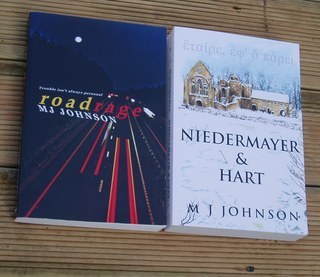 Print versions of psychological thriller 'Roadrage' and horror/thriller 'Niedermayer & Hart' Over the past ten days I’ve happily been required to fulfil an increasing number of orders for hard copy versions of both my books. Perhaps people are ordering them as gifts for Christmas for their ‘rellies’ or chums? The books are trade paperback (airport) sized, and were beautifully produced to a high standard by the sadly no longer trading print firm of MPG Biddles. A librarian friend claims the books have remained in good physical condition even after multiple loans - so, both good-looking and durable, definitely a winning combination! Anyway, my personal thanks to those of you buying print versions of the books. I do of course appreciate that they are considerably more expensive, but they do make for lovely reading and they look great on a shelf too! If anyone ever wants a copy signed, I’m always happy to oblige, simply get in touch through the contact form on this site.
Print versions of psychological thriller 'Roadrage' and horror/thriller 'Niedermayer & Hart' Over the past ten days I’ve happily been required to fulfil an increasing number of orders for hard copy versions of both my books. Perhaps people are ordering them as gifts for Christmas for their ‘rellies’ or chums? The books are trade paperback (airport) sized, and were beautifully produced to a high standard by the sadly no longer trading print firm of MPG Biddles. A librarian friend claims the books have remained in good physical condition even after multiple loans - so, both good-looking and durable, definitely a winning combination! Anyway, my personal thanks to those of you buying print versions of the books. I do of course appreciate that they are considerably more expensive, but they do make for lovely reading and they look great on a shelf too! If anyone ever wants a copy signed, I’m always happy to oblige, simply get in touch through the contact form on this site. Finally, starting today, Kindle copies of my psychological thriller Roadrage are on a countdown deal. Once again, the best price comes at the beginning as it rises incrementally until returning to its normal retail price. I hope as many thriller readers as possible take advantage of this offer. Please take a peek at what people have said about Roadrage on the reviews page of this website, and if your appetite has been whetted - here’s the link to follow Amazon UK
Finally, starting today, Kindle copies of my psychological thriller Roadrage are on a countdown deal. Once again, the best price comes at the beginning as it rises incrementally until returning to its normal retail price. I hope as many thriller readers as possible take advantage of this offer. Please take a peek at what people have said about Roadrage on the reviews page of this website, and if your appetite has been whetted - here’s the link to follow Amazon UK
Published on November 27, 2014 02:37
November 20, 2014
Art is Long and Time is Fleeting!
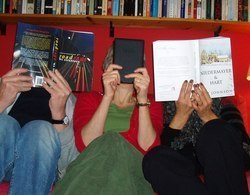 Kindle Countdown - starts today! It has been rather a frustrating and disjointed week - I guess we all get ’em sometimes. My head and chest are still blocked-up with the remnants of the flu-like bug Judith and I fell prey to a few weeks back. We’d hoped this week to finally wave goodbye to the monumental scaffold that clings about our house, but there’s a problem with the flashing on a chimney, so the scaffold has to stay until the end of the month when our roofing guys can get on to it. Last night we went to the cinema and watched what was billed as a tour of the art treasures of the Vatican Museum in Rome. It turned out a big disappointment with lots of pointless tracking shots entering and exiting grand doors, or cameras pulling away to reveal the great sweep of a curving staircase, every meaningful moment meaningfully backed with meaningful music (geddit!), and then there were long lingering moments when we were transported to some darkly-lit space where a brooding bare-chested actor painfully emoted while the narration prattled on, ramming it home how artists suffer for their art - I don’t know about that, but I was certainly suffering about ten minutes into this ludicrously ponderous production with its fatuous commentary. For goodness sake, just show us more of the flippin’ art, the wonderful sculpture and fine painting, the Michelangelo and Raphael! What a wasted opportunity!
Kindle Countdown - starts today! It has been rather a frustrating and disjointed week - I guess we all get ’em sometimes. My head and chest are still blocked-up with the remnants of the flu-like bug Judith and I fell prey to a few weeks back. We’d hoped this week to finally wave goodbye to the monumental scaffold that clings about our house, but there’s a problem with the flashing on a chimney, so the scaffold has to stay until the end of the month when our roofing guys can get on to it. Last night we went to the cinema and watched what was billed as a tour of the art treasures of the Vatican Museum in Rome. It turned out a big disappointment with lots of pointless tracking shots entering and exiting grand doors, or cameras pulling away to reveal the great sweep of a curving staircase, every meaningful moment meaningfully backed with meaningful music (geddit!), and then there were long lingering moments when we were transported to some darkly-lit space where a brooding bare-chested actor painfully emoted while the narration prattled on, ramming it home how artists suffer for their art - I don’t know about that, but I was certainly suffering about ten minutes into this ludicrously ponderous production with its fatuous commentary. For goodness sake, just show us more of the flippin’ art, the wonderful sculpture and fine painting, the Michelangelo and Raphael! What a wasted opportunity! Okay, that’s the ranting over and done with - good things happened too. My book Roadrage acquired a very nice review from Aditi Saha, an avid reader and book blogger who lives in West Bengal, India. Aditi posted her comments on Goodreads, Amazon.com and provided a first review for either of my books on Amazon India. Over the past two weeks I’ve been highlighting opportunities for Kindle readers in the US to buy copies of my books at greatly discounted prices. And from today there’s going to start a similar offer for UK readers. The countdown deal begins with Niedermayer & Hart from 20 November, immediately followed by Roadrage from the 27 November. As with the Amazon.com countdown offer, the very best price for each of the books will be at the start. I sincerely hope a large number of people take up this offer and I look forward to hearing whatever feedback they care to send my way over the coming weeks and months. Enjoy. Here’s the link to Niedermayer & Hart .
Published on November 20, 2014 00:53
November 14, 2014
Random Harvest and Roadrage
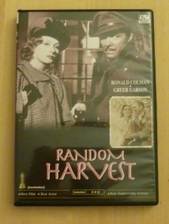 My late mother adored a darn good film and was generally a lot of fun to watch a movie with. I went to the pictures with her often when I was a boy, and I recall she always got caught up in the action on screen very easily. Sometimes (as children are strangely wont to do!) I’d cringe with embarrassment at her cinema antics, like the time when we were watching Where Eagles Dare and at the moment when it looked certain that Richard Burton was a Nazi spy, Mam muttered loud enough for me and a few nearby rows to hear, “Ooo, you wicked bugger!” I momentarily shrank in my seat, and by the time the interval arrived (RB wasn’t, it turned out, a baddie, and yes, long movies had intermissions back in 1968!) Mam looked round at me, her eyes dancing with excitment and exclaimed, “It’s very exciting, Mart, isn’t it? Shall we have an ice-cream?”
My late mother adored a darn good film and was generally a lot of fun to watch a movie with. I went to the pictures with her often when I was a boy, and I recall she always got caught up in the action on screen very easily. Sometimes (as children are strangely wont to do!) I’d cringe with embarrassment at her cinema antics, like the time when we were watching Where Eagles Dare and at the moment when it looked certain that Richard Burton was a Nazi spy, Mam muttered loud enough for me and a few nearby rows to hear, “Ooo, you wicked bugger!” I momentarily shrank in my seat, and by the time the interval arrived (RB wasn’t, it turned out, a baddie, and yes, long movies had intermissions back in 1968!) Mam looked round at me, her eyes dancing with excitment and exclaimed, “It’s very exciting, Mart, isn’t it? Shall we have an ice-cream?”Last weekend Judith and I watched a favourite film of Mam’s from her wartime days, which we’d bought on DVD. My Dad, her fiancé, was by this time (1942/3) far away in India, and Mam was at home alone, just a lovelorn girl of eighteen or nineteen. The film Random Harvest was based on the James Hilton bestseller of the same name and starred Ronald Coleman and Greer Garson. It’s about a young man who has lost his memory after he is discovered injured in No Man’s Land during World War One. Believe you me - this film helps you arrive at a fully comprehensive understanding of the term ‘tear-jerker’! I’d never watched it before, but Mam, who had seen it at the Rex Cinema in Aberdare, and had gone to every single evening performance over the week it played, had given me a scene by scene description many times throughout my childhood years. Yes, it’s sentimental, but so what, we had a box of tissues leftover from the last time we watched It’s a Wonderful Life! The performances, despite the era when it was made, are subtle and understated, and the script is always convincing, even if the overall premise may be a little far-fetched. Anyway, it was great to watch, not least because it was in some way like being able to share the experience with Mam. Definitely got the thumbs-up from me and Judith.
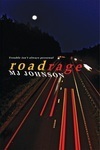 Last week I announced that Niedermayer & Hart was on a Kindle Coundown offer - however, this offer only applied to US readers. A similar deal starts today on Amazon.Com for my psychological thriller Roadrage, which will kick off at only 99 cents (before rising incrementally every 40 hours to its normal price of $4.99) - so if you’d like to read a copy, get in fast! UK readers will have their own opportunity to purchase both books through a similar offer from the end of next week.
Last week I announced that Niedermayer & Hart was on a Kindle Coundown offer - however, this offer only applied to US readers. A similar deal starts today on Amazon.Com for my psychological thriller Roadrage, which will kick off at only 99 cents (before rising incrementally every 40 hours to its normal price of $4.99) - so if you’d like to read a copy, get in fast! UK readers will have their own opportunity to purchase both books through a similar offer from the end of next week.
Published on November 14, 2014 14:54
November 5, 2014
Nightmare Builders!
 It has been a strange hectic few months since our summer holiday in Ruhpolding, Bavaria in early August. Upon our return, I’d arranged for some necessary and fairly extensive building works to get underway. I’d considered what needed doing carefully and gone about things cautiously, or so I thought, and had received about half a dozen different estimates for the work. The job mostly required the repointing of brickwork that was in poor condition and had been hidden beneath masonry paint. I didn’t have any immediate contacts when it came to bricklayers, so I used an online directory provider who claim that they thoroughly vet the tradespeople on their website, and that the reviews for them posted by scores of satisfied customers are most definitely to be trusted, enabling you as a prospective customer to feel confident and sleep easy in your bed. A note of warning ... beware!
It has been a strange hectic few months since our summer holiday in Ruhpolding, Bavaria in early August. Upon our return, I’d arranged for some necessary and fairly extensive building works to get underway. I’d considered what needed doing carefully and gone about things cautiously, or so I thought, and had received about half a dozen different estimates for the work. The job mostly required the repointing of brickwork that was in poor condition and had been hidden beneath masonry paint. I didn’t have any immediate contacts when it came to bricklayers, so I used an online directory provider who claim that they thoroughly vet the tradespeople on their website, and that the reviews for them posted by scores of satisfied customers are most definitely to be trusted, enabling you as a prospective customer to feel confident and sleep easy in your bed. A note of warning ... beware! What I didn’t realise, and probably most prospective customers don’t either, is that these companies charge the tradesperson a nice fat fee to to use their service. A reputable builder explained that even impressive acronyms for what might seem to us novices as representing solid-as-rock trade organisations, are often meaningless - “Just an opportunity to hike-up the price,” he suggested, and went on to say, “The only way to be sure of a good builder is either to see their work, or, through the recommendation of someone you completely trust”. I entirely agree. These customer-review sites are simply opportunities for tradespeople to advertise their skills and should definitely be seen as such; undoubtedly there are some good people on these sites, but they are easily open to abuse; the danger lies in the perception (which they have a vested interest in promoting) that customers are dealing with an authoritative voice that can be unequivocally trusted ... again, I say, beware!
After I’d sacked the builders I’d taken on via this well-known website, I rang to make a formal complaint. The girl on the phone was warm and expressed dismay that we had had a bad experience with one of their tradesmen. She said she’d put me through to their ‘Complaints Department’, pointing out that there may be no-one in that office at this time, but reassured me that if I left my name and telephone number someone would be sure get back to me promptly. Ten days later I’d heard nothing and rang again. I was about to be put through to their complaints department once more until I mentioned this was the second time I’d called. I got the distinct impression that most people give up before they make the second call. The apologetic chap I spoke to suggested, as I hadn’t been given an invoice number by the tradesman, that I leave my feedback on their website, which they would understandably, for the sake of fairness (presumably because I might be an unrealistically demanding or even vindictive customer) allow the tradesman an opportunity to comment on and offer his explanation, or perhaps he might be able to put the work right ... after twenty-one days if the matter wasn’t resolved and the tradesman couldn’t justify himself, my comments would be posted on their site. I suggested their organisation, to ensure fairness, might like to send someone over to examine for themselves the builders’ thoroughly dreadful work ... witness for themselves the mortar they’d thinly smeared over paintwork to make it look like they had ground-out and repaired a joint, or see their wafer thin pointing that would no doubt ‘ping-out’ at the first frost. He gently explained that they were not able to make site visits at that time (whatever that meant!).
It’s quite a big thing to get rid of your builders once works are underway, because by this time you generally have quite a lot invested already in what they’re doing. At first you try to convince yourselves that maybe they just got off to a bad start ... maybe next week their time-keeping and perhaps even their work might improve ... in your heart you already know you’re deluding yourselves ... the sleepless nights have already started! There were four of them and I don’t think I ever saw one of them before 9 am ... some days I didn’t see them at all ... the last straw was when only one of them rolled up for work in the second week at about 11am, broke for an hour’s lunch at 12.30pm, then condescended to do an hour more in the afternoon before packing up for the day. Their on site presence was as rare as a hen’s teeth (as someone who works from home, I took to jotting down their hours) ... four guys over two weeks totalling 72 hours present on site (I suspect time actually working was far less) isn’t going to win any gold medals for diligence and hard work. The moment arrived when they just had to go! And once I’d bitten the bullet it immediately felt better - no work is better than rotten work that is going to require a good deal of putting right.
However, there were inevitably consequences to bear: I’d agreed to what I’d considered to be a reasonable payment at the end of each week’s work, so we were taken for some money - but in the great scheme of things and against the overall cost of the job, we didn’t suffer too badly. There’s certainly no way of getting any money back, they’re the sort of guys who if you took them to the small claims court, it would not only end up costing you more money, they’d probably claim to having no money at all and would probably be allowed to pay you back at £1 a week. I’d suggest that if a builder requests any interim payments, that you discuss this thoroughly with them before agreeing to it and make any agreed payments a week in lieu. Hindsight is a great thing!
Once the builders were finally gone we then encountered a couple of weeks of disturbed if not entirely sleepless nights - our home was now surrounded by a large scaffold, costing us money as it lay idle. There has been something of a building boom in the south-east of England this year; the number of other houses in the surrounding streets that bear their own scaffolds confirms this. For over two weeks every reputable builder I approached who came recommended to me turned out to be busy. The situation seemed impossible ... I was comforted by a story I knew from Eastern wisdom about the transience of all things ... “This too will pass” I assured myself many times. And to ease my frustration and to save my nails from being bitten down to the quick, I launched myself at the house’s gable end (not literally!), and my son lent a hand too - I don’t possess the skill to dismantle and rebuild a chimney, but I could certainly grind out and repoint brickwork that would ultimately be painted again. I persisted in looking for new builders and eventually some of the good guys in white Stetsons turned up and took on the more skilled work. We are very grateful to them.
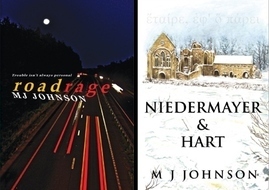 Up to 81% discount on Kindle from 8 November! And that’s what happened, and why this has been the longest blog-holiday this website has ever taken! I’ve still got a few bits and bobs inside and out to finish off, so I can’t get down to my daily writing schedule again just yet; but I’m no longer solely thinking and dreaming about bricks and mortar - the house is looking great and the end is definitely in sight! I’ve actually started thinking about my books and their marketing again, and recently set up what I hope will prove to be some attractive opportunities to get Kindle copies of both my books at highly discounted prices on Amazon.com and Amazon.uk. The offers will start on Saturday 8 November and go on until Thursday 4 December. Both the books will be available at different times and the price they’ll be available at will vary - I’ll simply say this, remember, it’s the early bird that catches the worm!
Up to 81% discount on Kindle from 8 November! And that’s what happened, and why this has been the longest blog-holiday this website has ever taken! I’ve still got a few bits and bobs inside and out to finish off, so I can’t get down to my daily writing schedule again just yet; but I’m no longer solely thinking and dreaming about bricks and mortar - the house is looking great and the end is definitely in sight! I’ve actually started thinking about my books and their marketing again, and recently set up what I hope will prove to be some attractive opportunities to get Kindle copies of both my books at highly discounted prices on Amazon.com and Amazon.uk. The offers will start on Saturday 8 November and go on until Thursday 4 December. Both the books will be available at different times and the price they’ll be available at will vary - I’ll simply say this, remember, it’s the early bird that catches the worm!
Published on November 05, 2014 13:17
October 8, 2014
No Tea Party!
 Quel horreur! This is a subject dear to my heart, a matter NEVER to be trifled with and one of great importance to most of us Brits. It’s a subject I’ve raised and celebrated before on this blog - however, this posting is sadly not concerned with celebration!
Quel horreur! This is a subject dear to my heart, a matter NEVER to be trifled with and one of great importance to most of us Brits. It’s a subject I’ve raised and celebrated before on this blog - however, this posting is sadly not concerned with celebration! As previously mentioned we recently returned from our annual summer holidays (see Bavarian Hols!) and a thoroughly enjoyable time it was too! The location, accommodation, food etc. were all quite faultless, ten out of ten! However, there was one area where I am reluctantly forced to shake my head in despair - to award, as the old Eurovision Song Contest cliché goes, ‘nil points’. I sincerely hope that I’ve fully communicated the sheer importance and gravity of this issue. It is a problem that, despite a personal appreciation for almost all things European, continues to magnify the relatively small distance occupied by the English Channel, forcing a giant chasm between mainland Europe and our island breed. And it’s not the first time in our history that this seemingly slight matter,as some may view it, has caused strife and difficulty - great Chinese dynasties once strove to keep its secrets hidden from the British Empire; people have lied, stolen and smuggled it to gain possession of it; a rather famous War of Independence was reputedly triggered because of it. You guessed it: Tea!
You may think as you read, gentle reader, that I’m composing this piece with my tongue firmly planted in the side of my cheek - but you couldn’t be further from the truth!
On numerous visits to Boulogne or Calais over the years I have often had cause to reflect on the number of cups of tea served to British visitors in French cafes - over the years, tens of millions I expect! Is it British phlegm, or just our national reluctance to complain and make a fuss that has allowed some truly awful cups of tea (criminally bad in my view!) to be tendered in our direction? Are the waiters too busy shrugging their shoulders with Gallic indifference to notice the look of sublime joy on our British faces as we rest our tired bones in their cafes and order a restorative cuppa - but don’t they also subsequently notice the dashed hopes, the look of panic in the eyes as our drink appears and we observe with horror the rapidly cooling glass of hot water with its tea bag neatly wrapped-up beside it on the saucer? I must confess, dear reader, in my bitterest moments to wondering if they do it on purpose - but surely not, after all, I mean Agincourt was an awfully long time ago, and anyway it’s not just confined to the French, actually it’s not just a European thing - the same thing happened to us in cafes in the US where in all other areas great service ruled the day!
I love coffee but at breakfast I MUST drink tea - anything else imbibed first thing can upset my day. I confess I almost cracked this holiday - I mean fourteen breakfasts where I was forced to infuse a tea bag in a pot of tepid water is almost too much for any Brit to bear ! I wonder if it might be possible to make it compulsory EU Law for all hotel and restaurant staff outside the UK to read George Orwell’s essay on the art of tea making? He was pretty fanatical about how to make a cup of tea and clearly stated how the pot containing an appropriate measure of the noble leaves should be brought to the boiling water - never the other way round!
The couple from the Wirral on a nearby table never drank anything but fruit juice or water at breakfast time. My wife Judith said something to them about us not being able to drink coffee first thing.
“Yes, we’re the same,” the wife of the couple replied.
“But you’re not drinking anything hot,” Judith said.
The woman nodded sagely, “We bring our own,” she said.
Published on October 08, 2014 12:09
September 28, 2014
Henry Rider Haggard
 Sir Henry Rider Haggard (1856 - 1925) was one of the most succesful adventure story writers of the late nineteenth and first quarter of the twentieth century. He is credited as being the founder of the Lost World literary genre, and I suppose today he’d be classified as a writer of popular or commercial fiction. He certainly belongs to the breed of author who writes to make his way and earn his keep rather than one who sees profit as beneath them and seeks only to attain literary greatness. However, Rider Haggard wrote skilfully without obfuscation and possessed an ability to make his readers picture the setting he wished to communicate to them clearly. He spent a few years as a young man in southern Africa and this appears to have furnished him with ample material for his subsequent literary career. He was quite prolific, and appears to have produced at least one book a year (often more) over the span of his writing career.
Sir Henry Rider Haggard (1856 - 1925) was one of the most succesful adventure story writers of the late nineteenth and first quarter of the twentieth century. He is credited as being the founder of the Lost World literary genre, and I suppose today he’d be classified as a writer of popular or commercial fiction. He certainly belongs to the breed of author who writes to make his way and earn his keep rather than one who sees profit as beneath them and seeks only to attain literary greatness. However, Rider Haggard wrote skilfully without obfuscation and possessed an ability to make his readers picture the setting he wished to communicate to them clearly. He spent a few years as a young man in southern Africa and this appears to have furnished him with ample material for his subsequent literary career. He was quite prolific, and appears to have produced at least one book a year (often more) over the span of his writing career.
 My maternal grandfather, born in 1891, and a lifelong avid reader, had a large selection of Rider Haggard’s novels on his bookshelves. He loved a thrilling tale, and I daresay as a youngster he would have adored the hugely exciting ‘King Solomon’s Mines’ with its boys’ own adventure story. The book’s description of a vast civil war battle between Haggard’s invented Kukuanas (clearly modelled with some respect on the Zulu culture) with the corpses of many thousands of their courageous warriors littering a plain stained red with their blood is still very affecting, and somehow, sadly presaged for me the terrible slaughter my grandfather and his generation would meet and know all too well as young men on the Western Front. A fact about Rider Haggard that I find of particular personal interest is that he spent his winters in Hastings. In 1917 he bought the North Lodge on Maze Hill, St Leonards-on-Sea, and apparently used the room sited just above its archway for writing until 1923. I think I’d have to put this location forward on a list of most coveted workrooms, although I confess that I haven’t seen inside. He was chums with fellow author Rudyard Kipling, another East Sussex resident who lived in the village of Burwash at a house called Batemans. Kipling also had a pretty nice writing room - one that I have seen, as Batemans is a National Trust property and is definitely worth visiting.
My maternal grandfather, born in 1891, and a lifelong avid reader, had a large selection of Rider Haggard’s novels on his bookshelves. He loved a thrilling tale, and I daresay as a youngster he would have adored the hugely exciting ‘King Solomon’s Mines’ with its boys’ own adventure story. The book’s description of a vast civil war battle between Haggard’s invented Kukuanas (clearly modelled with some respect on the Zulu culture) with the corpses of many thousands of their courageous warriors littering a plain stained red with their blood is still very affecting, and somehow, sadly presaged for me the terrible slaughter my grandfather and his generation would meet and know all too well as young men on the Western Front. A fact about Rider Haggard that I find of particular personal interest is that he spent his winters in Hastings. In 1917 he bought the North Lodge on Maze Hill, St Leonards-on-Sea, and apparently used the room sited just above its archway for writing until 1923. I think I’d have to put this location forward on a list of most coveted workrooms, although I confess that I haven’t seen inside. He was chums with fellow author Rudyard Kipling, another East Sussex resident who lived in the village of Burwash at a house called Batemans. Kipling also had a pretty nice writing room - one that I have seen, as Batemans is a National Trust property and is definitely worth visiting. King Solomon’s Mines is a well written, highly thrilling adventure. However, the modern reader has to take into consideration when it was written before approaching it. Rider Haggard was a conservative Victorian and held Imperialist ideals consistent with the times in which he lived - views that most of us, I am pleased to say, find utterly repellent today. Most modern readers will I imagine also be horrified, as I was, when they read the chapter where the book’s narrator and main protagonist Alan Quatermain leads his white companions and their native bearers on an elephant hunt - the ensuing slaughter of ‘the brutes’ is quite shocking, and clearly shows the terrible disregard for the natural world prevalent amongst Europeans as they settled new territories. Having said this, and if you are able to get beyond these lamentable truths and see the book within its time frame and take along with it a large pinch of salt, then it is, I think, a very good read and a wholly ripping yarn.
Rider Haggard’s novel ‘She’ is reckoned to be one of the most widely read books ever written, and fifty years ago was estimated to have sold over eighty million copies. It has been translated into numerous languages and made into several film versions. I recall getting a little hot under the collar myself when as a lad I saw Ursula Andress in the titular role. Like King Solomon’s Mines it is difficult for the modern reader to encounter views that are now considered to be quite unequivocally racist. The European world powers at the end of the nineteenth century were obsessed by the fearful idea of racial degeneration; Rider Haggard may have been influenced by this concept after witnessing the ruins of ‘Great Zimbabwe’ which were explored and excavated in the 1870s; they may have been, at least in part, responsible for the ancient lost city in She and his imagined native Armahagger people who live amongst the ruins and have, it must be said, very little to recommend themselves (incidentally, the white ruled Rhodesian Government for many years put political pressure on archaeologists to deny that such a city as ‘Great Zimbabwe’ could have been built by any black races). The book also touched on the rapidly changing role of women in the industrialised world. It was a hugely influential book in its day; its female protagonist Ayesha - the She of the title - has been cited as a female prototype in the works of Freud and Jung; the White Queen, Jadis, in C.S Lewis’s Narnia books owes a debt to her; as too does the character of Shelob in J.R.R. Tolkien’s The Lord of the Rings. Like King Solomon’s Mines it is without any shadow of doubt a very good example of the lost world literary genre, however its often racist and Imperialist ideals are sometimes quite unpalateable - and any modern reader has to bear this fact in mind before proceeding.
Published on September 28, 2014 11:25
September 10, 2014
Medea
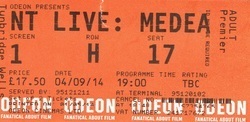 Last week we went to see Medea in the NT Live series at our local Odeon Cinema. This was a new translation of the Euripides play by Ben Power, with Helen McCrory playing the title role. She is a fabulous actress and this, I thought, was an excellent production directed by Carrie Cracknell. It’s a play I happen to know well, having played the part of Jason myself in a production about twenty years back. However, taking part isn’t the same as watching - it was wonderful to actually be seeing the play for the first time! It is still, even after two and a half thousand years, deeply involving as a piece of theatre, and it is hard to believe that Euripides only took third place for penning it at the Dionysia Festival of 431 BC. The supporting cast, choreography, movement, set design and presentation in this production are all excellent.
Last week we went to see Medea in the NT Live series at our local Odeon Cinema. This was a new translation of the Euripides play by Ben Power, with Helen McCrory playing the title role. She is a fabulous actress and this, I thought, was an excellent production directed by Carrie Cracknell. It’s a play I happen to know well, having played the part of Jason myself in a production about twenty years back. However, taking part isn’t the same as watching - it was wonderful to actually be seeing the play for the first time! It is still, even after two and a half thousand years, deeply involving as a piece of theatre, and it is hard to believe that Euripides only took third place for penning it at the Dionysia Festival of 431 BC. The supporting cast, choreography, movement, set design and presentation in this production are all excellent.Many things about this production were very similar to the one I was involved in: both adopted a modern setting; both came down firmly on the side of Medea and the injustice of being cast aside by Jason. I discussed some of these concepts with an octogenarian actor at the time of my production, who didn’t find the updating of the play wholly to his taste,”Where were the robes?” he complained. And it’s only years later, after witnessing the play from an audience’s perspective, that I understand what he meant - he wasn’t simply complaining about the costumes! Last Thursday, Judith and I left the auditorium in total agreement that we had just seen a first class piece of theatre. However, later on we found that neither of us was somehow as deeply affected as we might have expected to have been after witnessing the atrocious act of filicide commited by Medea in her terrifying revenge upon Jason for his cowardly betrayal of her love. Why, we had to ask ourselves, were we not as moved as we have often been after watching many other tragic dramas?
I feel many of our theatre productions strive too hard to give plays from an earlier age a contemporary ‘feel’. Personally, I think we are wrong to take Euripides’ universality as a writer as unshakeable proof that he was some kind of proto-feminist. He definitely sympathised, I think, with the plight of women in Greek society; as well, I suspect as understanding Medea’s vulnerability as an immigrant living in what was to her a foreign land; we can appreciate her pain at being suddenly cast aside, despite her love and devotion, by an ambitious self-serving husband. Let’s face it, Jason is a rat and Euripides makes this very plain for us to see. But something I think we must also bear in mind is that Euripides’ audience was entirely male - no women were present at the Dionysia Festival - so perhaps he is making them look at their responsibilities. Maybe this didn’t go down too well, which is why he only came third?
However, we are in great danger I think when we attempt to turn a classical text into kitchen sink drama. We should not forget that in the original Euripides play, Medea, after witnessing the devastation she has wrought upon her faithless husband by murdering their children, not to mention Jason’s bride-to-be Glauce and Creon the king, exits the stage bearing the dead bodies of her sons in a fiery chariot belonging to the sun God Helios. She is an accomplished practitioner of the dark arts; Medea isn’t new to atrocity, she has already killed her own brother and betrayed her own people to help Jason steal the Golden Fleece. Let’s not forget either that these ancient ‘myths’, as they are to us, were a religion to the Greeks; they are their Bible stories if you will. Medea has always struck me as an archetype, the goddess Kali perhaps comes close; Ayesha in Rider Haggard’s She strikes a similar note. The female archetype is creative, loving and devoted, yet once forsaken by him she once loved with a devotion verging on the fanatical, can become as equally terrifying and unforgiving in her malevolence and hatred; by poisoning Jason’s new wife and destroying his royal aspirations, then murdering their children, Medea has, by the end of the play, utterly obliterated any possible future he may have aspired to; it is an unimaginably terrible revenge.
Anyway, just my thoughts. This is a great production and it is well worth seeing.
Published on September 10, 2014 15:00
August 17, 2014
Bavarian Hols!
 We've been away for the last few weeks, mostly walking in Bavaria, however, we found time to spend an evening and most of the following day with some old German friends we've known since our twenties, and lunched with another friend, a colleague of Judith's who was herself holidaying near Salzburg. It's always a lovely thing to see and revisit friends. We've been to Salzburg several times now but always in a hurry it seems, so can't claim to have explored the city beyond the level of a cursory glance. This situation is of course unacceptable and must be remedied at some point in the future once and for all! It's the birthplace of Mozart, for goodness sake! We did however bring back some Mozart Ball sweets for family and friends, though not the official ones that you can purchase at only one shop in Salzburg that always appears to have grafted to it an eternity-long queue.
We've been away for the last few weeks, mostly walking in Bavaria, however, we found time to spend an evening and most of the following day with some old German friends we've known since our twenties, and lunched with another friend, a colleague of Judith's who was herself holidaying near Salzburg. It's always a lovely thing to see and revisit friends. We've been to Salzburg several times now but always in a hurry it seems, so can't claim to have explored the city beyond the level of a cursory glance. This situation is of course unacceptable and must be remedied at some point in the future once and for all! It's the birthplace of Mozart, for goodness sake! We did however bring back some Mozart Ball sweets for family and friends, though not the official ones that you can purchase at only one shop in Salzburg that always appears to have grafted to it an eternity-long queue.Most of our other time in Ruhpolding, where we were based at the very agreeable Hotel Maigerschwendt, was spent walking and swimming. The hotel's meals were so unreservedly excellent, not to mention brilliantly varied, that exercise was most definitely required if we wished to return home with the same sized waistband we'd arrived with. We swam every day possible in the marvellous Vita Alpina swimming pool and gradually built up from zero to a respectable twelve lengths of their Olympic-sized open-air pool. Vita Alpina is really a swimming complex; it contains various outdoor pools to satisfy the requirements of all its visitors - swimming, diving, fun etc; its indoor facilities include a massive slide, wave pool, several pools for families with small children, and our favourite - the Wellness Pool. This is accessed from inside but is in the open-air, it's heated to something like blood temperature and contains all kinds of fountains, waterfalls and jacuzzi-like offerings - bliss! We generally finished off with ten minutes in the steam room before reinvigorating ourselves under the cold shower before leaving Vita Alpina in search of a coffee like a couple of inanely grinning Telly-Tubbies!
The remarkable thing about holidaying in Ruhpolding is that all this was absolutely free, because if you're a guest of one of the hotels you are given an Extra Card, which gives free daily entry to the pool and free bus travel as well as use of the local chairlift and cable-car - other things are free or at a reduced price too. I imagine this must make it a particularly appealing destination for families with children. We had some great walks, probably my favourite being a five hour round-trip along an old smugglers' route to Austria where you actually walk underneath a waterfall.
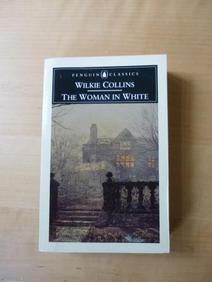 For the first time ever I forsook reading books (well, not really!). What I mean is, I took no printed books with me and relied on Kindle for my reading supply. The main book I read was The Woman in White by Wilkie Collins. It is a mystery novel, published in 1859 - Collins is generally acknowledged to be the father of detective fiction. It is an epistolatory novel, with accounts given in the first person, much like testimonies, by different protagonists from the story. It also highlights the poor legal rights accorded to women once they were married - Collins had a legal training, so I daresay this was a point of some importance to him. The book's main character, Walter Hartright, a humble drawing master, assisted by the immensely characterful Marian Halcombe, assumes the role of 'the sleuth' throughout most of the story. We are never in any doubt about who the novel's baddies are - I mean to say, how could anyone called Sir Percival Glyde be viewed with anything but dark suspicion? And as for Count Fosco, an Italian no less - he seems to possess diabolically inspired powers at various times! The task Hartright commits himself to is uncovering a terrible secret, which, should it ever be revealed will undoubtedly ruin both men. Collins skilfully manages to make us wait until the very last chapters of the book before we are certain of 'the secret'. A hundred and fifty years after it was written the book remains a page-turner. Did I have any reservations? Well, yes, it's rather long-winded and probably contains a bit too much exposition and repetition for a good many modern readers - but of course we must always bear in mind whilst reading that the book first appeared in a serialised form which probably accounts for some of this. However, the book's overall effect and its place in literary history makes it well worth an occasional struggle with exasperation and impatience when the story decides to meander along for yet another fifty pages. I must admit I found the character of Laura Fairlie a little over-romanticised and sentimental - however, this is an accusation often made against Dickens' females too - I guess it was a requirement of Victorian fiction that its love interests were sweet and pure and accordingly rather brainless. Anyway, who would have the temerity to suggest Collins and Dickens were doing it wrong? They knew exactly what they were about and wrote specifically for the times they lived in. This is a great read and one that definitely contributed to my holiday pleasure!
For the first time ever I forsook reading books (well, not really!). What I mean is, I took no printed books with me and relied on Kindle for my reading supply. The main book I read was The Woman in White by Wilkie Collins. It is a mystery novel, published in 1859 - Collins is generally acknowledged to be the father of detective fiction. It is an epistolatory novel, with accounts given in the first person, much like testimonies, by different protagonists from the story. It also highlights the poor legal rights accorded to women once they were married - Collins had a legal training, so I daresay this was a point of some importance to him. The book's main character, Walter Hartright, a humble drawing master, assisted by the immensely characterful Marian Halcombe, assumes the role of 'the sleuth' throughout most of the story. We are never in any doubt about who the novel's baddies are - I mean to say, how could anyone called Sir Percival Glyde be viewed with anything but dark suspicion? And as for Count Fosco, an Italian no less - he seems to possess diabolically inspired powers at various times! The task Hartright commits himself to is uncovering a terrible secret, which, should it ever be revealed will undoubtedly ruin both men. Collins skilfully manages to make us wait until the very last chapters of the book before we are certain of 'the secret'. A hundred and fifty years after it was written the book remains a page-turner. Did I have any reservations? Well, yes, it's rather long-winded and probably contains a bit too much exposition and repetition for a good many modern readers - but of course we must always bear in mind whilst reading that the book first appeared in a serialised form which probably accounts for some of this. However, the book's overall effect and its place in literary history makes it well worth an occasional struggle with exasperation and impatience when the story decides to meander along for yet another fifty pages. I must admit I found the character of Laura Fairlie a little over-romanticised and sentimental - however, this is an accusation often made against Dickens' females too - I guess it was a requirement of Victorian fiction that its love interests were sweet and pure and accordingly rather brainless. Anyway, who would have the temerity to suggest Collins and Dickens were doing it wrong? They knew exactly what they were about and wrote specifically for the times they lived in. This is a great read and one that definitely contributed to my holiday pleasure!
Published on August 17, 2014 07:19
August 10, 2014
Early Reading
Although I often write about books in this blog, I try not to harp on constantly about my own writing, and I always hope that I can be forgiven on those occasions when I feel it’s appropriate to do a plug for one or other of my books. Actually, I’d much prefer to talk about books I’ve read rather than ones I’ve written.
Books have always been an essential part of my life, well, as far back as I can recall anyway. This goes for my wife Judith too, who devours books so fast I’m surprised she doesn’t get chronic indigestion. Actually, we were busy at it first thing this morning, discussing books that is, over our boiled eggs and toasted rye bread with tahini. She’d heard on the radio that a new study has shown conclusively that reading is an important part of brain development in children. I have no clue exactly when I started reading. My mother always said I took to it like a duck to water and once I’d set off there was absolutely no stopping me. I recall (vaguely) going to London for a family holiday when I was five and Mam said I read everything in sight. Five year olds have no sense of discernment and are blissfully unaware of that awful, sadly yet to come crippler ‘appropriateness’. My parents and big brother, all quite shy in their way, smiled diffidently whenever we ascended or descended tube train escalators, whilst I, without any concept yet of an inner censor and in a voice that really ‘travelled’, read aloud all the advertisments passing-by - “Meet the Kings and Queens of England at Madam Tussauds ... Beefeater Gin ... Sirdar corsets for ladies with a fuller figure” - you get the picture.
The very first book I actually remember reading by myself, a book that is still one of my all time favourites, is The Wind in the Willows by Kenneth Grahame. It was published in 1908 and the cast of characters first came to life in the bedtime stories Grahame made up for his son Alastair. It is a wonderful children’s tale about a group of anthropomorphised animals who enjoy a series of adventures together along the river bank where they live. It starts with the self-effacing and most beloved Mr Mole being suddenly overtaken by a strange wanderlust one Spring morning:
The Mole had been working very hard all the morning, spring-cleaning his little home. First with brooms, then with dusters; then on ladders and steps and chairs, with a brush and a pail of whitewash; till he had dust in his throat and eyes, and splashes of whitewash all over his black fur, and an aching back and weary arms. Spring was moving in the air above and in the earth below and around him, penetrating even his dark and lowly little house with its spirit of divine discontent and longing. It was small wonder, then, that he suddenly flung down his brush on the floor, said 'Bother!' and 'O blow!' and also 'Hang spring-cleaning!' and bolted out of the house without even waiting to put on his coat. Something up above was calling him imperiously, and he made for the steep little tunnel which answered in his case to the gravelled carriage-drive owned by animals whose residences are nearer to the sun and air. So he scraped and scratched and scrabbled and scrooged and then he scrooged again and scrabbled and scratched and scraped, working busily with his little paws and muttering to himself, 'Up we go! Up we go!' till at last, pop! his snout came out into the sunlight, and he found himself rolling in the warm grass of a great meadow.
I love this book! Ithink the above is one of the most beguiling opening paragraphs I have ever read. It’s probably thirty years since I last read The Wind in the Willows and I have just reminded myself to do so again.
Books have always been an essential part of my life, well, as far back as I can recall anyway. This goes for my wife Judith too, who devours books so fast I’m surprised she doesn’t get chronic indigestion. Actually, we were busy at it first thing this morning, discussing books that is, over our boiled eggs and toasted rye bread with tahini. She’d heard on the radio that a new study has shown conclusively that reading is an important part of brain development in children. I have no clue exactly when I started reading. My mother always said I took to it like a duck to water and once I’d set off there was absolutely no stopping me. I recall (vaguely) going to London for a family holiday when I was five and Mam said I read everything in sight. Five year olds have no sense of discernment and are blissfully unaware of that awful, sadly yet to come crippler ‘appropriateness’. My parents and big brother, all quite shy in their way, smiled diffidently whenever we ascended or descended tube train escalators, whilst I, without any concept yet of an inner censor and in a voice that really ‘travelled’, read aloud all the advertisments passing-by - “Meet the Kings and Queens of England at Madam Tussauds ... Beefeater Gin ... Sirdar corsets for ladies with a fuller figure” - you get the picture.
The very first book I actually remember reading by myself, a book that is still one of my all time favourites, is The Wind in the Willows by Kenneth Grahame. It was published in 1908 and the cast of characters first came to life in the bedtime stories Grahame made up for his son Alastair. It is a wonderful children’s tale about a group of anthropomorphised animals who enjoy a series of adventures together along the river bank where they live. It starts with the self-effacing and most beloved Mr Mole being suddenly overtaken by a strange wanderlust one Spring morning:
The Mole had been working very hard all the morning, spring-cleaning his little home. First with brooms, then with dusters; then on ladders and steps and chairs, with a brush and a pail of whitewash; till he had dust in his throat and eyes, and splashes of whitewash all over his black fur, and an aching back and weary arms. Spring was moving in the air above and in the earth below and around him, penetrating even his dark and lowly little house with its spirit of divine discontent and longing. It was small wonder, then, that he suddenly flung down his brush on the floor, said 'Bother!' and 'O blow!' and also 'Hang spring-cleaning!' and bolted out of the house without even waiting to put on his coat. Something up above was calling him imperiously, and he made for the steep little tunnel which answered in his case to the gravelled carriage-drive owned by animals whose residences are nearer to the sun and air. So he scraped and scratched and scrabbled and scrooged and then he scrooged again and scrabbled and scratched and scraped, working busily with his little paws and muttering to himself, 'Up we go! Up we go!' till at last, pop! his snout came out into the sunlight, and he found himself rolling in the warm grass of a great meadow.
I love this book! Ithink the above is one of the most beguiling opening paragraphs I have ever read. It’s probably thirty years since I last read The Wind in the Willows and I have just reminded myself to do so again.
Published on August 10, 2014 07:03
August 2, 2014
Unhealthy Practices
 We enjoy a good ‘wind-up’ in the Johnson family. I was telling my son the other day when he came round for a chat about the reaction I got from Judith when she came in from work one afternoon. Whilst gazing awkwardly at the floor, I began, “Jude, I have something I feel I need to get off my chest!”
We enjoy a good ‘wind-up’ in the Johnson family. I was telling my son the other day when he came round for a chat about the reaction I got from Judith when she came in from work one afternoon. Whilst gazing awkwardly at the floor, I began, “Jude, I have something I feel I need to get off my chest!”“What?” she asked absent-mindedly as she leafed through her mail.
I kept my eyes averted from hers (I’m an awful corpser!). “I’ve got involved with something that’s probably quite unhealthy,” I said falteringly.
I now had her full attention. “What do you mean?” she asked. I could sense tension, glimpse a growing apprehension behind her eyes.
“Since starting work down in the cellar ... I’ve become addicted to The Archers” I ‘fessed up.
I then received a friendly clip round the ear!
The Archers (in case you didn’t know) is a long running UK radio soap (the longest running soap-opera in the world I believe!) about a farming community who live in an imaginary English village called Ambridge. It’s not really known for particularly sensationalist storylines. Like all soaps it does occasionally try to hook in new listeners and possibly excite its older ones with the odd minor crime or sexual indiscretion, but mostly the show just plods along with storylines about agricultural quotas, new milking equipment, proposed bypasses that threaten to destroy village life as we know it (or hear it at least), and perhaps the odd storyline designed to really get the pulse racing e.g. the stress of having a new kitchen installed. Phew! Spicey stuff, huh? The thing that probably makes The Archers slightly different to the TV soaps is the demographic of its audience; it is a soap about mostly middle-class characters that is most probably appreciated by largely middle-class listeners.
I was only joking about becoming ‘hooked’ - although I do admit to having listened on a daily basis for several weeks now whilst repointing my cellar walls. However, I’ve been listening in from time to time ever since I was a small boy and at least bear no outward signs of damage! The characters have remained vaguely familiar to me over the years by making an occasional excursion into Ambridge country from time to time - although I admit to having massive gaps in my knowledge. For instance, whatever happened to Sid Perks? ... where has Brenda Tucker gone? etc. At the moment there’s an illicit romance going on between Roy Tucker (married to Hayley) and the recently-widowed Lizzie Pargeter - the seeds of their passion were sown whilst doing some research under canvas at a recent music festival - this is about as hot and sticky as it ever gets for a resident of Ambridge. Radio 4 listeners must be glued to their radios in open-mouthed awe at the sheer sauciness of this storyline. I recall with some trepidation a few months, about a decade back, when Judith and I came near to full-on Archers’ addiction. This was at a time when agricultural businessman Brian Aldridge (married to Jennifer) started looking at Gaelic-Minx Siobhan’s portfolio of assets a little too closely. I seem to recall he was setting up a business in Hungary and Siobhan, a linguist, was acting as a translator for him. I think she taught him a few things he didn’t previously know, nudge, nudge, wink, wink, know what I mean?
Anyway, Judith was horrified that I’d been listening to The Archers and I am now thoroughly sworn off again! There’s no problem, I really can handle it ... but, well ... if only I could find out how Hayley’s going to learn about Roy and Lizzie’s peccadillo ... will Jennifer manage to convince Brian to let her have the hideously outdated shell-motif tiles removed from their guest bathroom, especially after all the recent upheaval and expense of their newly installed designer kitchen ... is Peggy Wooley suffering from loneliness or is she actually going quite, quite, doolali ... is Home Farm, long-inhabited by generations of Archers, about to be destroyed by the newly proposed road?
Hope so!
Published on August 02, 2014 10:59



